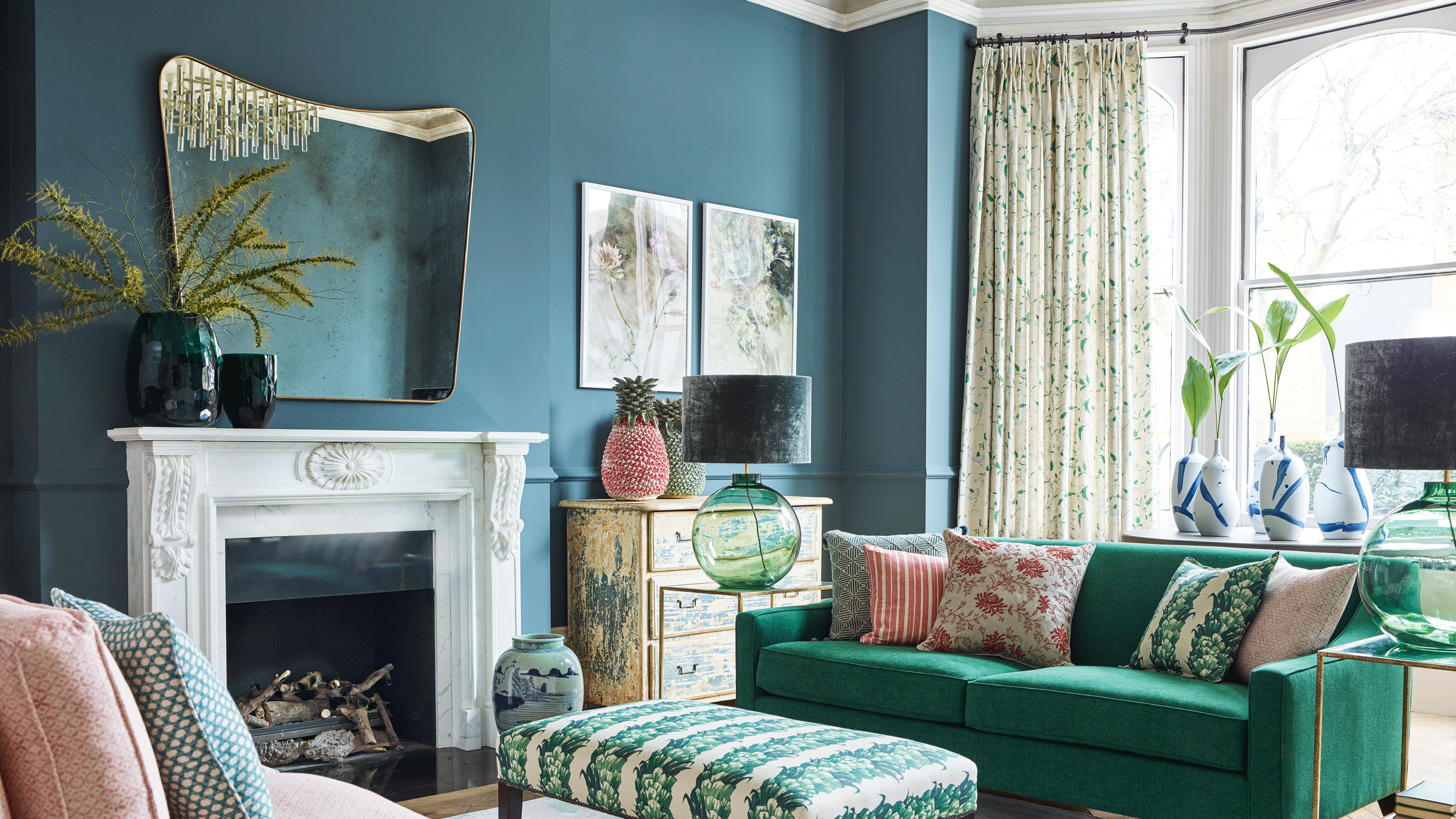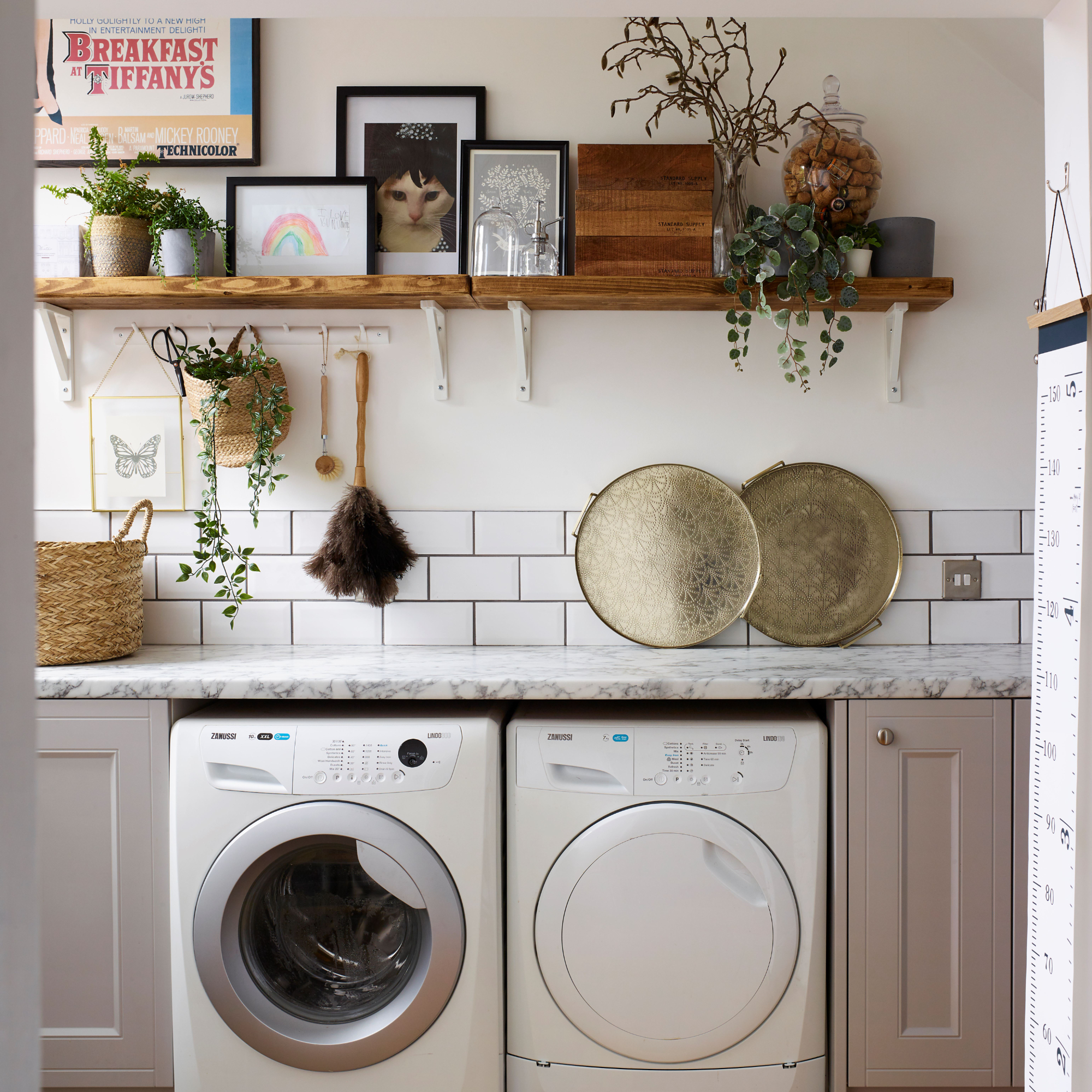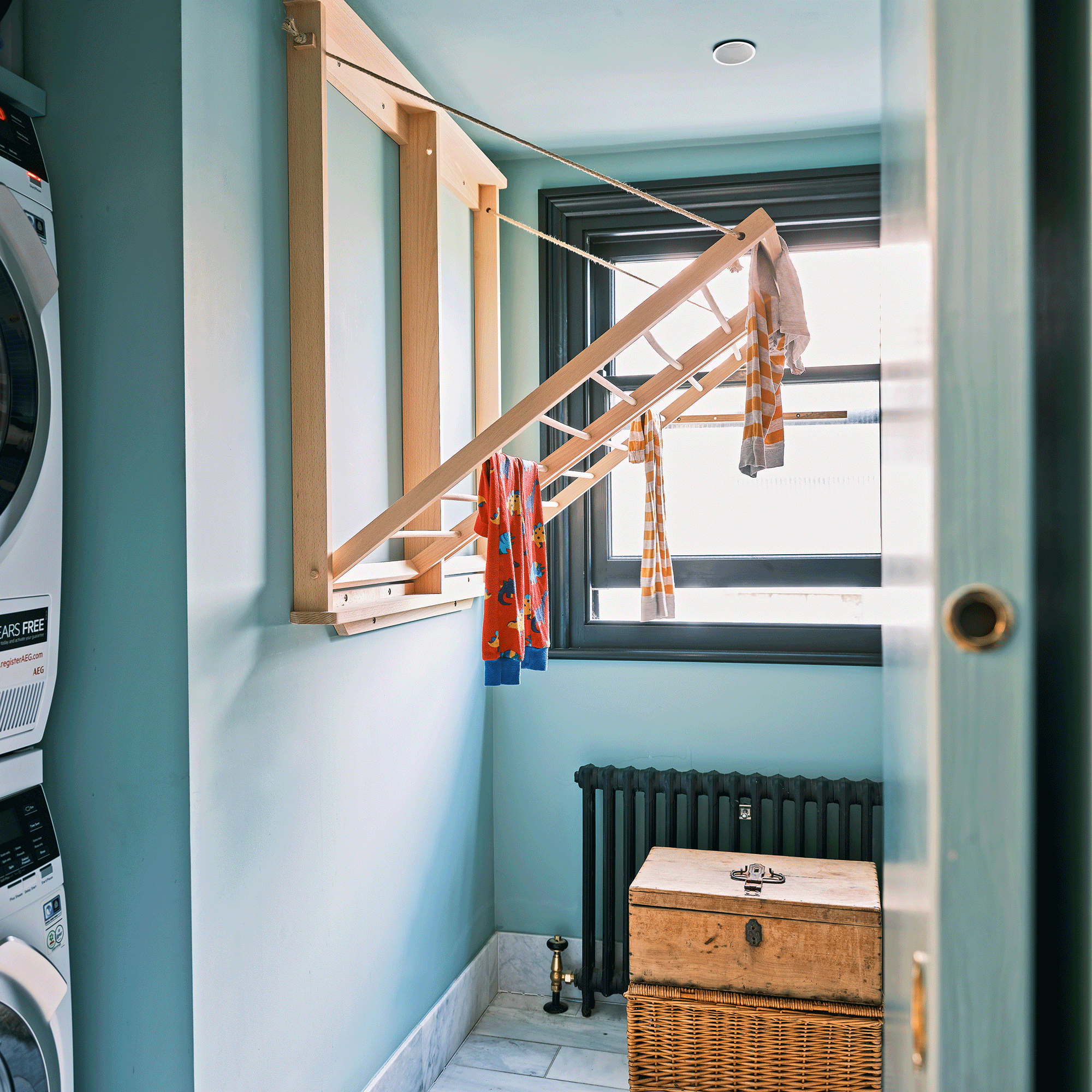How to clean mould off fabric – Cleaning experts share their top tips on how to tackle it
From how to prevent mould in the first place, to the best natural remedies, learn how to tackle mould in any room of your home


It can be incredibly frustrating to find mould or mildew in your home and you'll need to learn how to get rid of mould on fabric fast if it's found it's way onto your curtains, your best sofa or even your blinds.
‘Mould on fabric is caused by exposure to moisture for an extended period of time, without adequate ventilation for the moisture to escape. This moisture could be anything from standing water to humidity or damp air, with the second being the main reason fabrics in the home get mouldy,’ reveals Lee Trethewey, interiors expert at Sustainable Furniture.
‘Mould thrives in damp and warm environments and is able to grow on fabric, especially those made of natural fibres like cotton, linen and wool,’ says Fabric-Online’s fabric and textile expert, Thomas Bird.
That ‘lack of ventilation and dampness can cause mould to grow on clothes and other fabrics,’ affirms Nigel Bearman, CEO of Daily Poppins. ‘Wood, drywall, and fabrics, which have a high fibre content, also attract mould spores and toxins.’

You may have noticed mould or mildew on some items in your wardrobe, as it can be the perfect location for spores to grow. Wardrobes typically lack ventilation and are dark and enclosed, not to mention they're not usually top of the list for damp removal monitoring in the home. ‘However, this doesn't just apply to clothing; many fabric furniture pieces can develop mould due to excess humidity and water damage,’ suggests Melody Maison’s home expert Anna Elkington.
‘Soft fabric blinds, like Roman blinds as an example, in bathrooms often get mouldy if they don't have sufficient ventilation, as it's a damp space,’ according to Leah Aspinall, Head of Design at Blinds 2go. ‘If the blind is consistently in a damp and humid atmosphere it doesn't always have the chance to dry out properly and this can cause mould to develop.’
‘It is important to target this mould as soon as possible as it can be extremely harmful to homeowners' health, resulting in respiratory problems,’ Anna concludes.
Sign up to our newsletter for style inspiration, real homes, project and garden advice and shopping know-how
But how easy is it to clean mould off fabric? Thankfully the experts have shared their top tips along with a step-by-step guide.
How to clean mould off fabric
‘Removing and killing mould is a meticulous process. Plus, you must remember that different fabrics require specific cleaning methods,’ outlines Andrea Philips, from Airtasker's Lifestyle Editorial Team. ‘If you aren't careful, your attempts to get rid of mould could damage your items or spread the mould problem.’
‘Before you go in with any method, it's really important that you do a patch test first. This is so you can decide not only if this method works for the mould on your fabric, but so you can make sure that the method isn't going to ruin your fabric at all,’ Lee concurs.
‘Cleaning mould off fabric is different to cleaning mould off of surfaces such as wood and paint, simply because the mould settles deeper into the fabric and fabric is generally more sensitive than other materials,’ he adds.

1. Find out if the fabric can be machine washed
If you are able to put the fabric in the washing machine, whether that be a soft furnishing such as a cushion cover, dish towel or even a removable sofa slip, ‘check the care instructions of your fabric first. If its machine washable, put it on a normal wash at the highest temperature the fabric allows. Pop a cup of distilled vinegar into the wash or rub in a suitable stain remover first,’ says Sarah Dempsey MyJobQuote.co.uk’s cleaning expert.
‘Hot water is the most effective at killing mould spores, so make sure you wash your garment at the hottest temperature possible,’ suggests Nigel.
‘If your fabric isn’t machine washable, you can soak the fabric instead. Fill a bucket with warm water and add in two cups of distilled vinegar and leave the fabric to soak. Alternatively, use a stain remover to soak it with,’ Sarah continues.
2. Use a soft brush to clean it
If the fabric isn’t suitable for soaking, ‘use a soft brush or cloth to work the solution or stain remover into your fabric without wetting it too much,’ says Sarah.
Certain sofas, whose covers can't be removed, upholstered chairs and other larger pieces of fabric furniture will require this method.
'Follow this up with a clean hot water cloth to remove excess mixed solution before leaving the furniture to dry or repeat the process until the mould is fully removed,' Nigel remarks.

3. Dry the fabric in a warm place outside
Once you’ve washed the fabric in question, you’ll want to ensure that you wring the item out to remove as much water as possible. Then you can hang it outside, ‘as the sun should treat any remaining mould,’ Sarah affirms. However, you’ll want to double check that your fabric won’t be damaged by direct sunlight.
As always, ‘remember that it is always best to save washing heavy fabrics for a warm, sunny day, and start the process first thing in the morning so that the items in question have as much time in the sunshine to air dry as possible,’ relays Sue Caldwell, cleaning ambassador at Clean Living International.
For fabrics that can't be soaked, 'once you’re happy the mould’s treated and removed, dry the fabric off with an absorbent cloth or paper towels. Make sure it’s dry to touch. If you’re struggling to get the fabric completely dry and you can’t hang it outside, open a window or use a dehumidifier to help the natural drying process,' Sarah adds.
FAQs
Can I use bleach to clean mould off fabric?
‘Yes, bleach is effective in killing mould,’ asserts Ava Wilson, Chief Editor from Unclutterer. ‘However, it can also weaken and discolour fabrics. If you choose to use bleach, always dilute it and test on a small, inconspicuous area first.’
While Sarah recommends only using bleach on white items. ‘You can add bleach to your machine wash. Alternatively, you can pre-soak or scrub the mouldy item in a bleach solution. But be sure to wear rubber gloves if you’re planning to do this though,’ she concludes.
‘In addition, make sure not to mix the bleach with household cleaning products as this can result in dangerous chemical reactions,’ says Anna. And ensure that you are working in a well ventilated area.
Is white vinegar a good alternative to bleach?
‘Vinegar is also a suitable solution for cleaning mould off of fabric,’ suggests Thomas. ‘It serves as a natural disinfectant and is less likely to harm fabrics compared to bleach. To use vinegar, prepare a mixture comprising one part vinegar and two parts water. Lightly apply this solution to the mould-infested area using a sponge or brush, letting it sit for about 30 minutes. Afterwards, thoroughly rinse the area with water.’
Are there any other natural solutions to clean mould?
There are a few other natural solutions which work on mould.
‘Using baking soda to get rid of mouldy smells in the house is a great idea since it kills some types of mould spores, absorbs moisture, and disinfects,’ says Nigel. ‘The neutral pH of baking soda makes it ideal for cleaning around children and pets, unlike most commercial mould removal cleaners. Simply baking soda directly on the mouldy surface and let it sit for an hour.’
Ava also recommends trying salt and lemon. ‘The acidity of lemon combined with salt can act as a natural bleach and mould remover,’ she declares.

Ellis Cochrane has been a Freelance Contributor for Ideal Home since 2023. Ellis has been writing about homes, interiors and gardens for four years now, with her also contributing to House Beautiful, Country Living, Expert Reviews, Real Homes and Stylist.